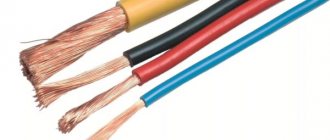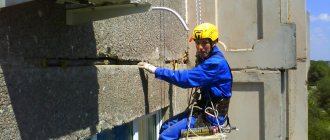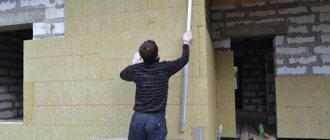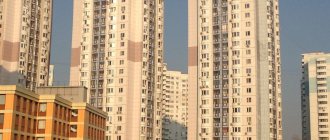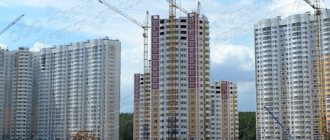Gas supply to residential buildings
Gas is supplied to a house or apartment through main pipes or from a gas tank/cylinder.
Several types of gas fuel are used in houses. The natural mixture combines various hydrocarbon compounds , including methane and propane .
Gas is supplied to consumers:
- through pipelines directly supplying fuel to household units (dispensers, stoves, generators, etc.);
- through ground transportation using cylinders and gas holders (specialized containers).
In tanks the mixture is transported in liquefied form , the conversion process differs depending on the type of gas. To reverse the conversion, the consumer just needs to open the cylinder tap in the kitchen. The system of closed containers is relevant if it is not economically profitable to lay a highway to private houses.
Main gas
Gas in the gas pipeline to residential buildings comes from the field and the point of production .
The main pipeline is the main type of supply to household consumers in the multi-apartment and private sector. The system includes gas distribution facilities :
- pipelines - above-ground, underground, on embankments (dams);
- leading and interval compressor stations, drying and cleaning stations ;
- gas distribution network installations on final branches, reducers;
- underground storage facilities .
Lines are built from steel pipes , the diameter of which is up to 142 cm, and the planned pressure inside is 10 MPa. The gas distribution system carries 50–60 billion cubic meters of fuel per year.
Automation operates at all objects of the structure a network of dispatchers supervises and controls the work .
Gas holder
The containers are designed to store gaseous fuel.
There are two types of gas tanks :
- Variable volume. In them, the gas has a pressure close to that existing in the atmosphere, and its temperature is equal to that of the surrounding air. The containers change volume with the arrival of a new portion of gas or during pumping. The wall material is rubberized material, rubber, reinforced concrete, metal.
- Constant volume. They are made underground, aboveground, spherical or cylindrical; inside the fuel has a pressure of up to 1.8 MPa. The structures come in horizontal and vertical configurations.
They are distinguished by volume into household cylinders based on a group of cylinders - 100 - 500 l , cylindrical for dachas and country plots - 10 - 20 m³, industrial gas supply - 20 - 50 m³.
Balloon
Liquid and compressed gas is stored and transported in sealed vessels under excess pressure. The material of the walls is steel 30KhMA, 34CrMo4, 30 KhGSA.
Types used:
- welded - the design contains a bottom, shell, and neck;
- seamless - consist of a bottom, cylinder, neck.
Cylinders are periodically checked and technically examined . Containers that do not pass inspection are not used. When transporting, rubber rings are placed on the container for safety.
Recommendations for safe use of gas
In practice, most explosions and fires are caused by human factor, neglect of safety precautions when using gas, and negligence in handling gas equipment.
To protect yourself and your loved ones, you need to follow a number of norms and generally established rules. This will help prevent explosive situations and all adverse consequences associated with gas leaks.
Rules for operating gas equipment
Any gas equipment should be purchased only from specialized companies that can present certificates for the sale of this type of product. Please note that the kit contains instructions for the safe use of the device.
Installation and repair work must be carried out by specialists from relevant organizations. Unauthorized gasification of a house or apartment, replacement, reinstallation and changes to the design of gas appliances are strictly prohibited
It is important to adhere to the following rules for operating gas equipment:
- carefully read the instructions and follow the recommendations indicated therein;
- do not use the equipment for other purposes (heat the apartment using a gas stove);
- monitor the performance of devices and ventilation, annually invite specialists to check the draft;
- ensure normal air flow in the room, do not isolate ventilation openings, do not block gas pipes;
- do not leave functioning devices unattended, especially in rooms with young children, and also if the devices are not designed for continuous operation and are not equipped with appropriate automation;
- do not tie clotheslines to gas pipelines;
- turn off gas valves and taps on the pipeline before leaving home; if you are away for a long time, it is better to turn off the electricity;
- Do not blow out or pour water or other liquids onto the flame on the burner.
It is very important to regularly check the condition and tightness of hoses, fittings, and threaded connections. The optimal length of the flexible hose is no more than 2 meters, the maximum service life is up to 4 years.
The hose should be tightly placed on the gas valve, but it is not recommended to overtighten the clamp clamp.
We discussed more recommendations for the safe operation of gas equipment in this article.
Most often, gas leaks occur due to ruptures in the hoses connecting the stove to the gas pipeline or failure of sealing in the area of threaded seams. Another common reason is the inattention of users who forget to close the valves responsible for the gas supply.
If you feel the characteristic smell of gas in the apartment, you must immediately turn off the burner taps and valves on the pipeline. You should also open doors and windows and thoroughly ventilate the gas-filled room, making sure that everyone present quickly leaves it.
People affected by gas should be immediately taken out into fresh air and given first aid:
- lay on your back so that your legs are higher than your body;
- remove tight clothing;
- cover, rub the chest, bring ammonia;
- when vomiting, turn on side;
- If possible, drink plenty of water.
You cannot do anything that could create a spark or flame: smoke, light a fire, turn on/off electrical appliances, lighting, press the bell button, use mobile devices.
It is advisable to immediately report the incident to the emergency gas service. While the rescuers arrive, it is worth warning your neighbors about the situation.
Leak detection methods
Several proven methods are used to detect gas leaks indoors. The simplest and most common option is to inspect the surface by applying soapy water along the gas pipes. , bubbles form in problem areas .
The most reliable way to avoid trouble is to install a carbon monoxide detector.
This modern, ultra-sensitive device - a gas leak sensor - will instantly notify you of the slightest problem through a sound or light alarm.
You can also detect a leak by hearing or smelling it. If there is a strong leak, the fuel mixture escapes from the pipes with a whistle. It is easy to smell the specific smell of odorants added to the fuel structure during processing.
Types of domestic gas
The energy carrier for home use ignites quickly, contains a minimum volume of solid particles, and burns without soot or smoke. The composition contains a flammable mixture and a small amount of modifying additives.
There are two types of domestic gas in an apartment:
- natural;
- liquefied.
The quality of gas fuel, the standard of concentration of impurities for the natural type is regulated in GOST 55.42 - 1987, and for LPG - in GOST 20.448 - 1990.
Natural
It consists of hydrocarbon compounds, mainly includes methane (about 98%) , as well as additives of other gaseous substances (butane, ethane, propane, pentane). In the depths of the earth it is found in gaseous form or dissolved in liquid and oil.
Characteristics of natural fuel:
- density in dry gaseous form - 0.68 - 0.85 kg/m³, in liquid form - 400 kg/m³ ;
- ignites independently at +650°C ;
- begins to evaporate at +161.5°C ;
- with air it becomes explosive at a concentration of 4.4 - 17% of the volume.
Air is 1.8 times the natural gaseous mixture , so in the event of a leak, the gas rises and does not collect at the bottom.
Liquefied
It is brought into this state by artificial cooling to a temperature of -160°C in order to be conveniently transported and stored. The result is a colorless, odorless liquid.
Technical indicators:
- density 0.41 – 0.5 kg/l , the value changes with changes in temperature and pressure;
- boils at a temperature of -158° – -163° C;
- in liquefied form it is non-toxic, non-aggressive and non-explosive .
At ordinary temperature and pressure, liquid turns into gas and mixes with air . If there is contact with an open flame at this time, the substance will ignite. The liquid mass is transported in gas carriers with cryogenic tanks . After restoration, it can be transported in gas pipelines.
Gas water heater device
A geyser is a unit for heating cold water to the required temperature in a single apartment or house using gas.
The column consists of the following parts:
- gas-burner
- heat exchanger
- chimney
- automation unit
- ignition unit
The automation unit ensures the safe operation of the gas appliance.
To turn on the column in water heating mode, the following conditions must be met: the presence of water in the water supply system and sufficient pressure, the presence of draft in the chimney to prevent carbon monoxide poisoning during its operation, and sufficient pressure in the gas supply system.
Composition and pressure of gas in apartments
The pressure in the pipeline differs from the pressure of the gas mixture entering the apartment or house. Inside the main section of the highway the indicator is high, but at the entrance to the branch for the residential sector there are gearboxes that reduce the pressure .
Pressure indicators for different gas consuming objects:
- cities and towns, residential sector - 0.05 - 3 kgf/cm²;
- supply to the industrial region - 6 kgf/cm²;
- gas supply between cities - 12 kgf/cm².
The pressure in different sections of pipes is determined by GOST. Household gas contains propane, water vapor, methane, hydrogen sulfide, and carbon dioxide. Odorants are added for odor: ethanethiol and ethyl mercaptan, so that leaks can be detected.
Flame color in burners
A red flame indicates a high concentration of gas in the air.
The color of the fire in the burner differs depending on the quality of the blue fuel. Pure gas burns with a bluish uniform flame without adding other shades.
Flame color meaning:
- yellow tongues - impurities are present;
- orange flashes - oxygen has entered the system, dust and soot are mixed;
- A red light indicates increased release of carbon monoxide into the air.
Valera
The voice of the construction guru
Ask a Question
Impurities reduce the quality of fuel and release components harmful to health during combustion. A gas mixture with additives releases less energy, so gas consumption increases. Utilities are responsible for supplying fuel, so if you suspect poor quality, submit a written request for inspection.
Types of gas pipelines
Gas pipelines are divided into:
- Trunk gas pipelines are designed to transport gas over long distances. At certain intervals, gas compressor stations are installed on the pipeline to maintain pressure in the pipeline. At the final point of the main gas pipeline there are gas distribution stations where the pressure is reduced to the level necessary to supply consumers.
- Gas distribution network pipelines are designed to deliver gas from gas distribution stations to the end consumer.
According to pressure in the line:
- Main: first class - at operating pressure over 2.5 to 10.0 MPa inclusive;
- second class - at operating pressure over 1.2 to 2.5 MPa inclusive
- low pressure - up to 0.005 MPa;
By gasket type:
- aboveground;
- underground;
- underwater.
Reserve gas pipelines are constructed for strategic reasons, to provide flexibility in loading gas carriers and to reduce the length of the transportation route.
The dangers of natural gas
If the gas content in the air is exceeded , such an atmosphere can cause poisoning . A dangerous concentration in the presence of a spark causes an explosion, leading to fires and destruction of house structures.
Any energy is dangerous if you do not control the serviceability of the devices. The mixture of air and gas becomes explosive when the room atmosphere exceeds a certain percentage. Flavorings are introduced into the mixture so that in the event of a leak, a person can detect the presence of gas in a volume of no more than 1/5 of the lower concentration of the explosion .
Toxicity
Exceeding the norm of gas in the air leads to poor health and even death. The first signs of deterioration are headache and shortness of breath.
Symptoms of mild poisoning:
- pounding in temples;
- chest pain and dry cough appear;
- watery eyes, nausea;
- sometimes auditory and visual hallucinations occur;
- The heart beats faster and blood pressure rises.
In case of severe poisoning, loss of consciousness occurs convulsions begin a coma develops paralysis occurs . automatic sensors in the gas system of your home that can turn off the supply.
If you smell gas, a person should immediately turn off the gas in the apartment and call emergency services.
Explosion hazard
A gas leak in itself is not a disaster, but it leads to an emergency situation, an explosion. The cause of air ignition can be a burning cigarette or a lit match. When you turn on electrical appliances a random spark , which will also cause an explosion. If there is a sour smell of gas in the house, you should not turn on the electricity or lights.
All adults and children should know the rules of behavior when smelling gas :
- close the valve or supply valve;
- open windows, doors, create a draft;
- call specialists.
Compliance with safety rules, timely inspection of hoses, burners, and units will preserve the integrity of the premises and health.
What types of gas are there?
Types of natural gas
- Natural gas
- Methane
- Propane
- Butane
- Nitrogen
- Helium
Interesting materials:
What is the name of jumping over a horse? What is the name of jumping over a goat or horse? What is a running jump over a goat called in a certain way? What is the distance between the top edge of the mesh and the ceiling called? What is the distance from 45 to 120 cm between interlocutors called? What is the name of the iPhone connector? What is a restaurant critic called? What is the smallest particle called? What is the name of the largest state in Western Asia by territory? What is the name of the largest city in the world?
Rules for operating gas equipment
The procedure for working with gas appliances is simple, but each user must follow simple conditions. Cylinders with contents or empty are stored outdoors . When cooking , stay close to the stove and make sure that the boiled-off liquid does not extinguish the fire and does not cause the flow of unburned gas.
Operating rules for GO:
- Cylinders are placed in casings or boxes no closer than 5 m from the entrance to the house, and are provided with a sign “Flammable. Gas" . They are equipped with ventilation grilles and locked.
- It is forbidden to use stoves or gas appliances if there is a smell of gas or the characteristic hiss of an escaping jet is heard.
- Do not connect gas equipment with a tool that produces sparks. The tightness of the connections is checked with soap foam, but not with a burning match or lighter.
What to do if a gas cylinder leaks?
If the cylinder leaks gas
as a result of deep corrosion, the container must be carefully taken out into the open air and all
gas
.
be done
away from open fire, and smoking is strictly prohibited when working with such a product.
Interesting materials:
How to make soundproofing so as not to hear your neighbors? How does shungite act on water? How does the sun affect plants? How to make a room partition with your own hands? How does a piston water pump work and work? How to find out how many pictures a Nikon camera took? How to make a corner rounding in AutoCAD? How to make clean water in a swimming pool? How to make PVA glue at home? How to make paste at home?
Causes of gas explosions in houses
It is best to install a special alarm system for high concentrations of carbon monoxide or household monoxide in the atmosphere . The signal will be transmitted to gas service workers and rescuers.
Main reasons for the emergency :
- deterioration of communal and intra-apartment pipes;
- faulty devices;
- human negligence.
Valera
The voice of the construction guru
Ask a Question
It is human negligence that often becomes a risk factor. The owners heat the room by turning on the burners, which is not allowed. The fire goes out due to a draft, so an unattended stove becomes the cause of a tragedy.
Chemical composition
The main part of natural gas is methane (CH4) - from 70 to 98%. Natural gas may contain heavier hydrocarbons - homologues of methane:
- ethane (C2H6),
- propane (C3H8),
- butane (C4H10),
- pentane (C5H12).
Natural gas also contains other substances that are not hydrocarbons:
- hydrogen (H2),
- hydrogen sulfide (H2S),
- carbon dioxide (CO2),
- nitrogen (N2),
- helium (He) and other inert gases.
Pure natural gas is colorless and odorless. To make it easier to detect gas leaks, odorants are added in small quantities - substances that have a strong unpleasant odor (rotten cabbage, rotten hay, rotten eggs). Most often, thiols (mercaptans) are used as an odorant, for example, ethyl mercaptan (16 g per 1000 m³ of natural gas).
Is it possible to refuse gas?
Each house is designed for a specific energy source for cooking, so the tenant has no choice when moving in. But according to the rules, a person can refuse gas in an apartment and replace it with an electric stove, for which a permit is required .
There are conditions for terminating the supply contract:
- the subscriber has fully paid for gas consumption according to the tariff;
- paid the costs of disconnecting a specialized organization;
- The special service drew up a deactivation act with mutual signatures .
The tubes are dismantled or plugged. In the second option, the tenant provides access to the apartment every six months to check the condition.
Where to go
To terminate the contract, they go to the territorial gas sector , write a statement outlining a request for disconnection. Take with you your passport and receipts for payment for gas and services for dismantling gas pipes . The text of the application indicates the reason for the disconnection. Sometimes the supply is interrupted only for a certain period of time, for example, when moving to the country, or a long trip abroad.
Often, not the entire pipeline in the apartment is turned off, but only one branch . For example, they leave the gas water heater supplied, but turn off the stove.
How to get permission
You cannot shut off the gas yourself; you need to obtain permission from the gas industry.
Dismantling the gas pipeline is associated with drawing up a new project for laying pipes for other residents in the house, therefore such redevelopments are specified in the drawings. The documentation is certified by a special gas department, then a permit is issued to turn off the gas.
The condition of the electrical wiring in the house is inspected . Connecting an electric stove causes an increase in power, so the electrical wiring sometimes fails and burns. An opinion from the electricians' technical service will be required on the condition of the wires and the possibility of increasing the load.
How to turn off the gas
After completing all the documents, the project, and the permit, a representative of the engineering and technical service contacts the user and specifies the time for the work to dismantle gas pipes in a separate apartment.
On the day of work, a contract is signed with the client, sometimes payment is made on the spot using a portable cash register. A civil service worker takes meter readings, then welds the pipe. After disconnection, a certificate of completion of work is issued. You cannot carry out such work on your own.
What does this or that color of fire in the burner indicate?
The shade of the flame in a gas burner can tell you about the combustion characteristics of natural fuel. If the fire has a rich blue color of a homogeneous structure, it means that the gas is completely burned. At the same time, the maximum possible amount of heat is released into the space.
What happens when the flame in the burner turns reddish or bright yellow? If the combustion gas is any color other than blue, this may indicate that the burner is receiving limited air or the gas is of poor quality. In this case, fossil fuels do not provide heating efficiently enough. To eliminate this drawback, it is enough to call a qualified specialist by contacting the gas industry.
As you can see, the color of a gas when burning can provide useful information. A yellowish or reddish tint of the fuel when ignited indicates that low-density gas is being supplied to the house. And since heating boilers are designed to consume fuel of a certain quality, when the gas density decreases, the equipment will need more substance to create a comfortable temperature.
In fact, yellow or red flames on the igniter indicate that the devices are using more fuel. Management companies may be to blame for such an omission. Some of them deliberately reduce the carbon dioxide and hydrocarbon content in the gas. Therefore, if the color of the flame on a gas burner changes, users have the right to contact the supplier for clarification.
Types of pipes for main gas pipelines
Pipes for gas pipelines
divided into two types according to the material of manufacture: plastic and steel. Both have their advantages. Thus, products made of polyethylene are quite flexible, which simplifies the process of arranging a transport system, and at the same time durable, so they can be used in areas with harsh climates. Another positive property of such products is their resistance to aggressive chemicals. The big advantage of polyethylene pipes is their low weight, which simplifies the delivery and installation process of the pipeline.
It is worth noting some limitations in the use of plastic pipe products. The construction of high-pressure gas pipelines from such products within the city is not allowed. It is also prohibited to install a gas transmission structure in areas with increased seismic hazard (more than 6 points) and ambient temperatures below -45°C.
Steel pipes for gas pipelines
can be electric-welded (usually straight-seam) or seamless. To install a gas pipeline system, pipes of large diameters are always taken, ranging from 508 to 1420 mm. The thickness of the walls can also be different and range from 7 to 48 mm.
For the production of products, only high-quality types of steel are used, for example, low-alloy steel with increased strength or carbon steel. As a rule, pipes for main gas pipelines
with a diameter of up to 500 mm are made from low-carbon, or from mild and semi-mild carbon steel grades. For the manufacture of products with a diameter of up to 1020 mm, mild and semi-mild low-alloy steels are used. Pipes with the largest diameter are made from heat-treated, high-strength material.
Autonomous gas heating systems
The use of natural gas is relatively inexpensive and safe compared to other sources of thermal energy. Modern gas equipment is capable of automatically ensuring optimal consumption of blue fuel and maintaining comfortable conditions in the building.
The reasons for using autonomous gas supply systems may be the following circumstances:
- absence of a main gas pipeline in the accessible vicinity;
- the high cost of designing and supplying gas from it to the house;
- errors during the construction of a private house, in which connecting the main gas is impossible for safety reasons. The requirements for the design and operation of autonomous systems are much softer.
For autonomous gas supply, the project is developed individually for a specific building. In this case, the developer may be offered a choice of fuel supply source: a gas tank or household gas cylinders.
